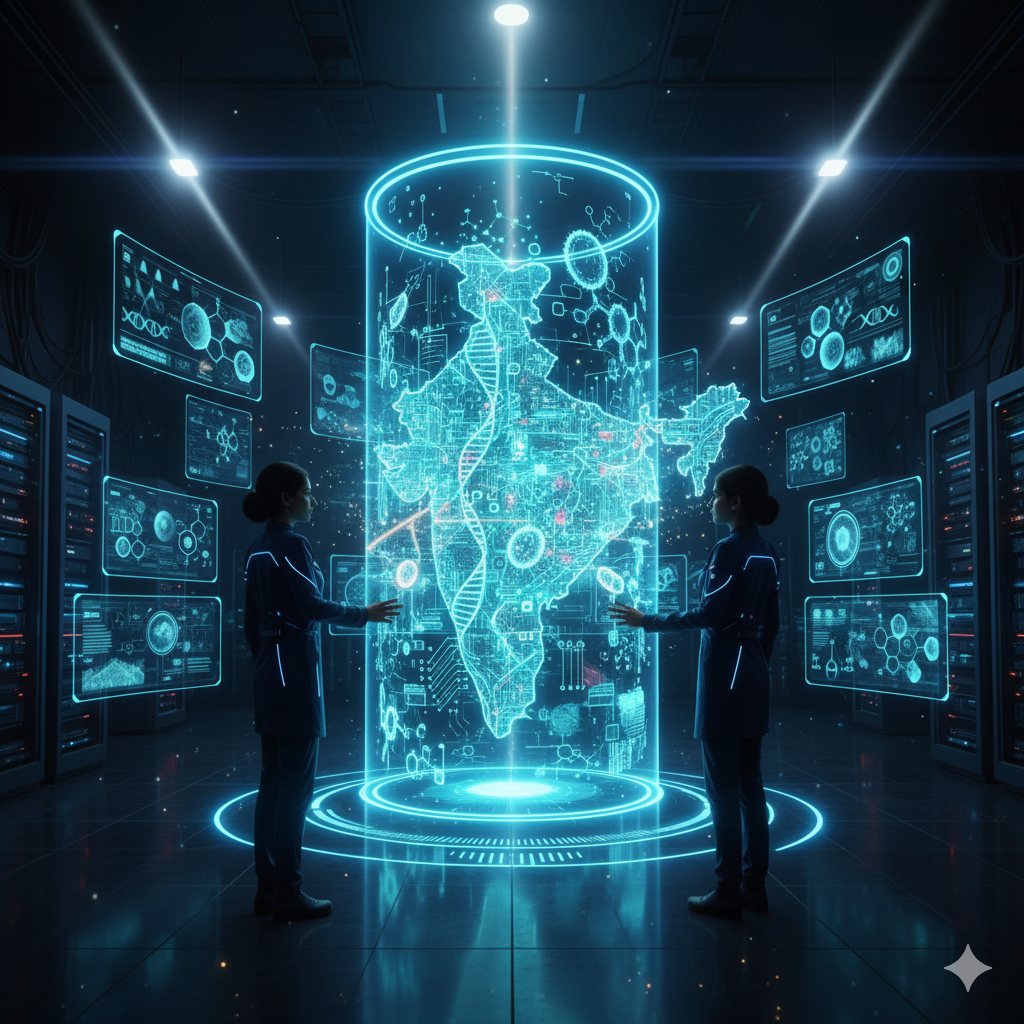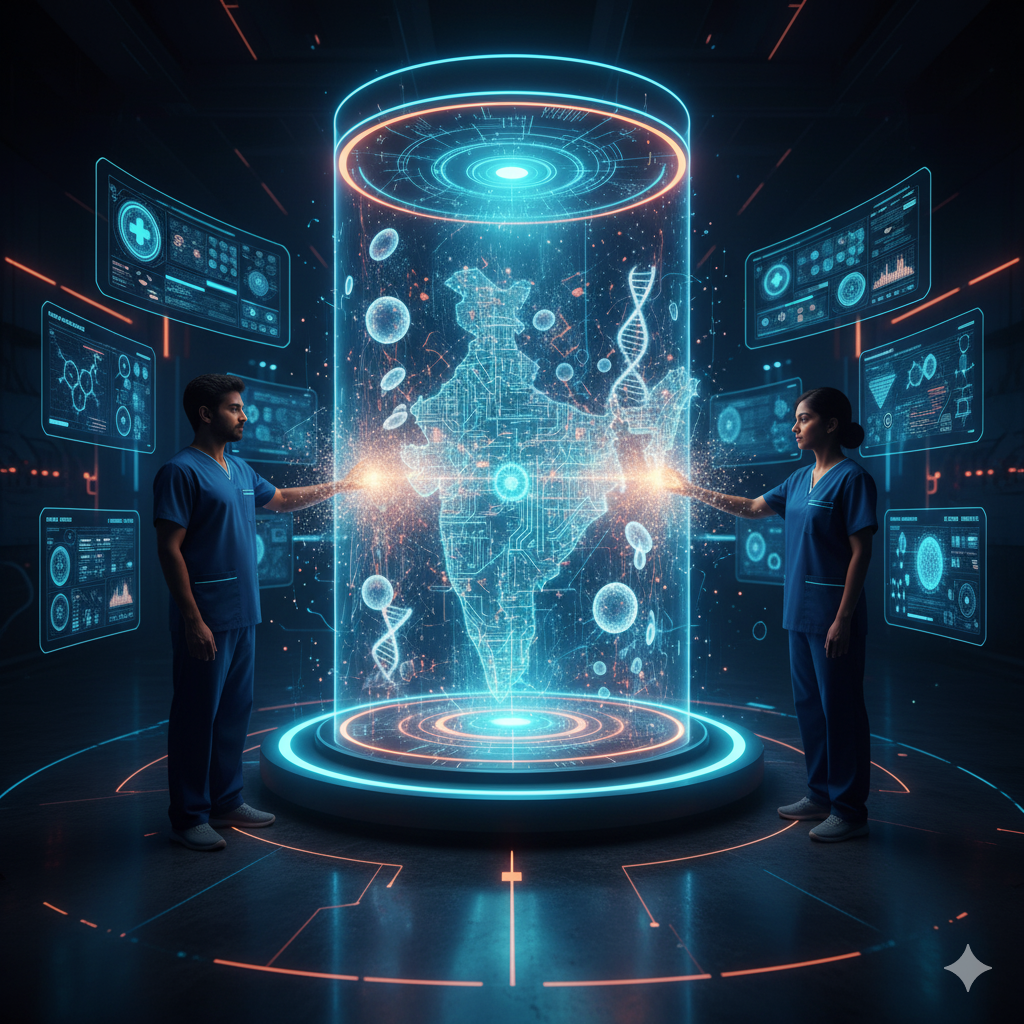Introduction
Science is not just a field of study—it is the foundation of modern civilization. From the air we breathe to the food we eat, from communication systems to medical care, science is deeply interwoven into every aspect of human life. It provides logical explanations for natural phenomena, offers tools for progress, and paves the way for innovations that enhance comfort, efficiency, and sustainability.
In particular, agriculture, the backbone of human survival and economic development, has undergone remarkable transformations due to the application of science-based technologies. Traditional practices once relied on human labor and natural cycles, but modern agriculture employs advanced techniques such as biotechnology, automation, data analytics, precision farming, and genetic modification, which have significantly improved productivity, efficiency, and food security.
This essay explores how science is integrated into our daily lives, its influence on human progress, and the striking changes in agriculture brought about by scientific advancements.
1. The Role of Science in Everyday Life
Science influences every sphere of human activity, from the basic necessities of life to complex societal functions. Its deep interconnection with our lives can be understood through the following aspects:
1.1 Science in Daily Essentials
Science plays a fundamental role in fulfilling our daily needs:
- Food and Water: Purification systems, preservation methods, and nutritional science ensure safe and healthy food and drinking water.
- Clothing: Synthetic fibers like nylon, polyester, and rayon—products of chemical science—have revolutionized the textile industry.
- Shelter: Civil engineering, materials science, and architecture use scientific principles to design durable, energy-efficient buildings.
1.2 Science in Health and Medicine
Modern healthcare is a direct product of scientific research:
- Discovery of antibiotics, vaccines, and diagnostic tools has dramatically improved life expectancy.
- Technologies like MRI, CT scans, and robotic surgery provide accurate diagnosis and treatment.
- Genetic engineering and nanotechnology are opening new frontiers in personalized medicine and drug delivery systems.
Science has thus transformed healthcare from reactive treatment to preventive and precision-based care.
1.3 Science in Communication and Information
Communication has evolved from letters to lightning-fast digital transmission due to scientific progress:
- Telecommunication technologies, including fiber optics, satellites, and mobile networks, rely on physics and electronics.
- Internet and Artificial Intelligence (AI) have made information universally accessible, transforming education, business, and governance.
The modern “information society” is a testament to science’s role in connecting humanity.
1.4 Science in Transportation and Infrastructure
Science has enabled rapid, safe, and efficient movement of people and goods:
- Automobiles, trains, airplanes, and ships are results of applied mechanics, materials science, and energy technology.
- Innovations like electric vehicles (EVs), smart traffic systems, and space exploration highlight science’s power to transcend boundaries.
1.5 Science in Energy and Environment
Energy is central to modern living, and science has transformed how we generate and consume it:
- Fossil fuels gave rise to industrial civilization, but renewable energy technologies—solar, wind, hydro, and bioenergy—are now driving sustainability.
- Environmental science helps us understand climate change, pollution, and biodiversity loss, leading to solutions like carbon capture and green technologies.
1.6 Science in Education and Knowledge
Scientific methods encourage curiosity, critical thinking, and evidence-based reasoning, essential for intellectual and societal growth. Through digital learning, virtual reality, and simulation technologies, science has democratized education globally.
1.7 Science in Entertainment and Lifestyle
From 3D movies to online gaming, wearable devices, and virtual reality, science enhances human experience, creativity, and comfort. Even sports training today uses biomechanics and performance analytics to optimize results.
1.8 Science in Governance and Public Administration
Modern governance depends heavily on science and technology:
- E-governance systems, data analytics, and AI improve transparency and service delivery.
- Satellite imaging and GIS technologies support disaster management, urban planning, and resource monitoring.
Thus, science is deeply embedded in the structure of contemporary civilization.
2. Science and Agriculture: A Historic Transformation
Agriculture has always been at the heart of human existence. Historically dependent on weather, soil fertility, and manual labor, it has evolved into a technology-driven industry through the application of scientific knowledge. The integration of physics, chemistry, biology, and engineering into farming practices has triggered profound changes in productivity, sustainability, and resilience.
2.1 The Pre-Scientific Era
Before scientific interventions, agriculture was based on traditional knowledge, superstition, and trial-and-error methods. Productivity was low, and farmers were highly vulnerable to droughts, pests, and soil degradation. The absence of scientific irrigation, fertilizers, and crop protection often resulted in famine and poverty.
2.2 The Green Revolution: A Turning Point
The Green Revolution (1960s–1970s) marked the beginning of science-based agriculture. Pioneered by scientists like Dr. M. S. Swaminathan in India and Norman Borlaug globally, it introduced:
- High-Yielding Varieties (HYVs) of wheat and rice,
- Chemical fertilizers and pesticides,
- Irrigation infrastructure, and
- Mechanized farming equipment.
This revolution transformed food-deficient nations into self-sufficient agricultural economies. India, for example, moved from the brink of famine to becoming one of the world’s largest food grain producers.
3. Science-Based Technologies and Their Impact on Agriculture
Scientific advancements have continued to reshape agriculture beyond the Green Revolution, ushering in an era of precision, sustainability, and innovation.
3.1 Biotechnology and Genetic Engineering
3.1.1 Genetically Modified (GM) Crops
Biotechnology allows scientists to modify plant genes for desirable traits such as:
- Pest and disease resistance (e.g., Bt cotton)
- Drought and salinity tolerance
- Improved nutritional content (e.g., Golden Rice with Vitamin A)
GM crops reduce the need for chemical inputs and enhance yield, ensuring food security.
3.1.2 Tissue Culture
Plant tissue culture enables mass multiplication of disease-free plants in controlled environments, ensuring uniform quality and high productivity. It’s widely used for bananas, sugarcane, and ornamental plants.
3.1.3 Biofertilizers and Biopesticides
Microbial biofertilizers (like Rhizobium and Azospirillum) and biopesticides derived from natural organisms minimize chemical pollution and enhance soil fertility.
3.2 Information and Communication Technology (ICT) in Agriculture
ICT applications have brought digital transformation to farming:
- Mobile apps and online platforms provide weather forecasts, crop prices, and pest alerts.
- E-agriculture portals like e-NAM and Kisan Suvidha link farmers to markets and advisory services.
- Remote sensing and GIS mapping enable monitoring of crop health, water resources, and land use.
This data-driven agriculture helps farmers make informed decisions and optimize productivity.
3.3 Mechanization and Automation
Science-based mechanization has drastically reduced human drudgery and increased efficiency.
- Tractors, harvesters, and seed drills ensure timely farm operations.
- Drones are now used for spraying pesticides, mapping fields, and assessing crop growth.
- Robotics and AI-driven machinery are being introduced for weeding, harvesting, and sorting.
Automation not only saves time but also improves precision and sustainability in resource management.
3.4 Precision Agriculture
Precision agriculture uses satellite data, sensors, and GPS to monitor and manage farm conditions in real-time.
- Soil sensors measure nutrient content and moisture.
- Drones and satellites collect aerial imagery for yield estimation.
- AI models analyze patterns to optimize irrigation and fertilizer use.
This method ensures maximum output with minimum input, conserving resources and protecting the environment.
3.5 Soil and Water Management
Science has improved soil and water conservation through:
- Soil testing laboratories that recommend crop-specific nutrient management.
- Drip and sprinkler irrigation systems that enhance water use efficiency.
- Rainwater harvesting and watershed management supported by hydrological models.
These practices sustain agricultural productivity even under climate stress.
3.6 Climate-Smart Agriculture
With the growing threat of climate change, scientific interventions aim to make agriculture climate-resilient:
- Drought-resistant and flood-tolerant crops are being developed.
- Weather forecasting and crop insurance systems reduce risks for farmers.
- Carbon farming and biochar technology promote soil carbon sequestration, reducing greenhouse gas emissions.
3.7 Nanotechnology in Agriculture
Nanotechnology introduces innovative solutions such as:
- Nano-fertilizers and nano-pesticides that release nutrients and chemicals in controlled amounts.
- Nano-sensors for real-time monitoring of crop health and soil conditions.
- Nanoporous materials that improve water retention in dry soils.
These technologies enhance productivity and sustainability while minimizing ecological damage.
3.8 Renewable Energy and Sustainable Farming
The integration of renewable energy into agriculture has made it more sustainable:
- Solar-powered irrigation pumps and biogas plants reduce dependence on fossil fuels.
- Bioenergy crops provide both fuel and income.
- Waste-to-energy technologies convert crop residues into usable energy.
This shift towards green energy agriculture ensures environmental protection and energy security.
3.9 Post-Harvest Technology and Food Processing
Science-based post-harvest technologies reduce losses and add value:
- Cold storage systems, vacuum packaging, and irradiation extend shelf life.
- Food processing industries utilize biotechnology and chemistry to produce fortified and safe food products.
- Supply chain digitization ensures transparency and reduces waste from farm to fork.
4. Striking Changes Brought by Science in Agriculture
The application of science-based technologies has triggered multiple transformative changes in agriculture:
- Increased Productivity:
Crop yields have multiplied several times due to improved seeds, fertilizers, and irrigation systems. - Reduction in Labor Dependency:
Mechanization and automation have reduced the reliance on manual labor, making farming faster and more efficient. - Sustainability and Environmental Protection:
The adoption of organic inputs, precision farming, and renewable energy reduces environmental degradation. - Resilience Against Climate Change:
New crop varieties and improved forecasting protect farmers against weather uncertainties. - Enhanced Income and Rural Development:
Science-based innovations have diversified agriculture into agribusiness, food processing, and agro-tourism, improving rural livelihoods. - Global Food Security:
The fusion of biotechnology, ICT, and sustainable practices ensures a steady food supply for a growing global population.
5. Challenges in the Application of Science to Agriculture
Despite remarkable progress, several challenges persist:
- High cost of technology limits access for small farmers.
- Digital divide in rural areas prevents effective adoption of ICT-based solutions.
- Environmental concerns related to overuse of chemical fertilizers and GM crops.
- Need for capacity building through education, training, and extension services.
- Ethical and biosafety issues in genetic modification and data privacy.
Addressing these challenges requires inclusive policies, technological democratization, and global cooperation.
6. The Future of Science-Driven Agriculture
The future of agriculture lies in sustainable intensification—producing more food using fewer resources with minimal environmental impact. Future trends include:
- AI and Big Data farming for predictive analytics.
- CRISPR gene-editing for next-generation crop improvement.
- Internet of Things (IoT) integration for smart irrigation and logistics.
- Vertical farming and hydroponics for urban food production.
- Circular agriculture for recycling waste into resources.
These innovations will make agriculture smarter, greener, and more inclusive, ensuring food and livelihood security for future generations.
Conclusion
Science is the invisible thread that connects every aspect of human existence. From medicine and communication to energy and agriculture, it empowers humanity to live better, longer, and more sustainably. In agriculture, science has not only improved productivity but also reshaped the very nature of farming—making it data-driven, environmentally conscious, and resilient.
Through biotechnology, nanotechnology, mechanization, and digital innovation, science-based technologies have turned agriculture into a science of sustainability and prosperity. Yet, the journey continues. As we face challenges of population growth, resource depletion, and climate change, the role of science will become even more crucial in ensuring a future where food security and environmental balance coexist.
Ultimately, science is not separate from human life—it is life itself, woven into every grain of food we eat, every breath we take, and every innovation that shapes our destiny.




